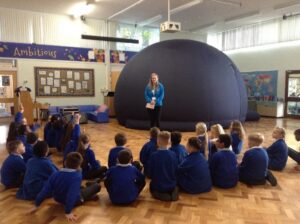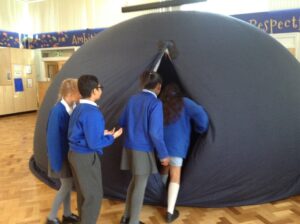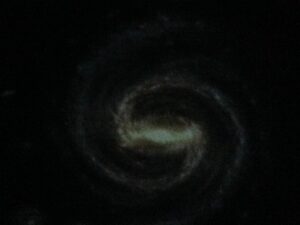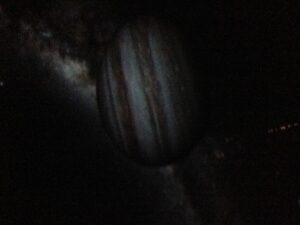Our knowledge about space increased when an inflatable Planetarium came to school. During the day everyone had a chance to go inside and have a quick lesson, but Year 5 enjoyed a full hour of astronomy facts as it was one of our science topics.
First of all we had to split into three groups because if we all went in at once then too much oxygen would be let out and it would start to deflate!! When we got into the dome it felt like you were in the middle of an igloo because it had a cold breeze .
Until Milly turned on the projector, you looked up to see a pitch black sky with shining stars dotted around. We got to look up close to all the amazing planets and found out so many facts about them like how many moons they have or how the Northern lights are created!!
We would like to share with you some of your favourite facts that we got from this amazing afternoon.
Sheena learnt that: Even though Neptune is the furthest from the Sun it isn’t the coldest. Uranus is!
Our moon is the size of Australia!
Summer stated that: Although Mercury is the closest to the Sun, it is not the hottest planet because Venus actually is.
A few people concluded that the Moon craters are made when asteroids reach its atmosphere.
Shivani said: I learnt that the inside of the sun is 15 Million degrees hot!
Our Moon is the fifth biggest Moon in our solar system.
Evan commented: Venus is the biggest planet in our solar system!
Bethany had a good fact which was: Saturn has a ring round it and that ring is made up of rock and ice (mainly ice).
Scarlett told us that the inside of the sun is hotter than the outside.
Freja wasn’t the only one but did say that: Even though Mercury isn’t the hottest it is the planet that’s temperatures change the most.
Deon asked how many stars there actually are and Milly replied with: no one really knows because no one has ever counted!
Krisha said: Mercury has no air, no water, and has extreme temperature.
This last fact is something we all found very interesting so we all want to share this with you:
We learnt how the Northern lights are made! This is what happens: The rays of burning gas get released from the Sun’s atmosphere and launched out into space and then the burning gas reaches earth’s atmosphere. It mixes with the gasses, nitrogen and oxygen and turns into a display of colourful lights!!!




